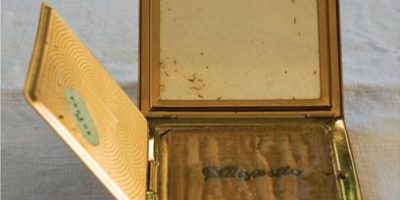Sweet & Bitter Marriage
A sensual novel in New Mexico’s desert
A multicultural, ethnic twist on the saga of westward expansion in the United States, The German Bride (Ballantine, $25) by Joanna Hershon tells the story of Eva Shein’s journey from a bourgeois Jewish girlhood in 1860s Berlin to the complexities of womanhood in Santa Fe, New Mexico.
Engrossed in the immigrant tale, the reader tends to forget a very important point: Eva’s journey is impelled by her sexual transgression with Heinrich, a non- Jewish artist who had painted portraits of Eva and her sister. This novel of a young Jewish girl in nineteenth-century Europe owning her own sexuality is striking and sets the tone for this unusual narrative.
Irrationally guilt-ridden over her sister’s death in childbirth and terrified of bringing shame on her family, Eva engineers and accepts a marriage proposal from Abraham Shein. Just returned from America, Shein is “an imposing man, a man who liked to take chances.” These two willful souls are equally matched as they strike out to the American wilderness.
One of the strengths of this novel is capturing the small joys, disappointments complexities, and emotional compromises in their marriage. Hershon does not flinch from portraying harsh realities, from the cockroaches covering a loaf of white bread in steerage to Eva gagging from her husband’s “bitter flesh and whiskey smell as he reached for her breasts” before falling asleep.
There is a lovely scene where Eva is soaking under the stars in a bathtub never moved inside the house. Her solitude reflects her acceptance of all the ways her husband has disappointed and failed her. Yet when he comes home and finds her, they make love in the water. It is a strong portrayal of that bittersweet moment near the end of many marriages.
Some of the characters in the novel are hastily drawn and function as little more than historical place markers or cultural stereotypes. These include the neurasthenic absentee mother off taking the waters at Karlsbad; a revolutionary uncle exiled to Paris; Chela, the indispensable but nonverbal Spanish maid; and Dona Cuca, the evil saloon keeper who lures Eva’s husband Abraham into debauchery and a gambling debt from which he will never recover.
Though the ending feels a bit conrived, what is lacking in characterization is made up for in Hershon’s descriptive abilities. The narrative provides a tactile and sensual reading experience — one can feel the warm, adobe walls and envision the plaza sprouting with Santa Fe’s first essential stores, including those run by enterprising Jewish immigrants like Eva’s husband and Meyer, his stalwart brother.
Hershon captures the New Mexican desert’s addictive quality, which mirrors Eva’s quest for an authentic life: “Even if she was inside a windowless kitchen, she knew the exact color of those hills at every time of day; she had memorized their severe yet intangible quality, how they were always there and always out of reach.”
Debra L. Schultz is the author of Going South: Jewish Women in the Civil Rights Movement and a great fan of northern New Mexico.


